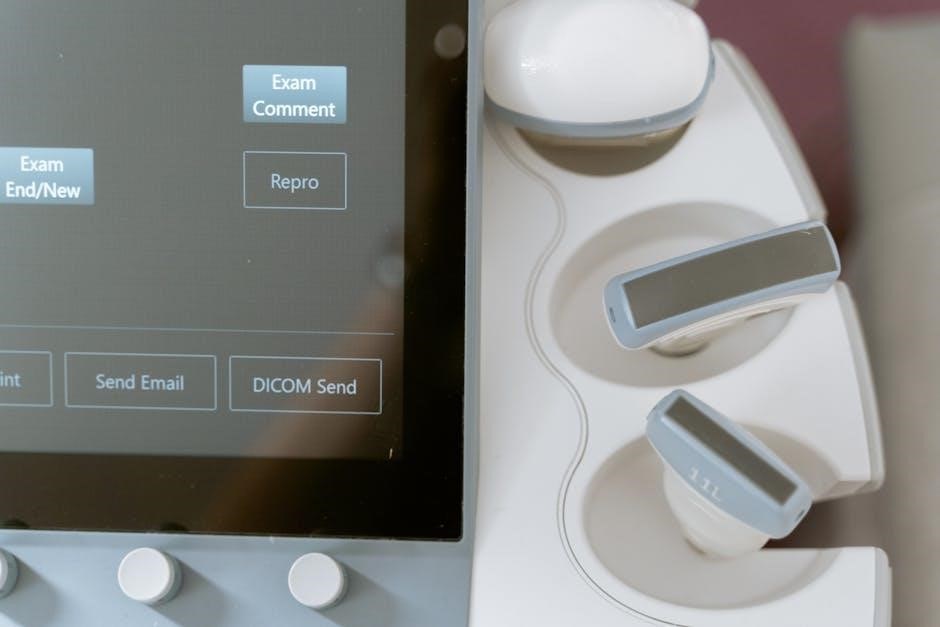The Common Admission Test (CAT) is a national-level exam for MBA admissions in India, conducted by the Indian Institutes of Management (IIMs). It assesses reasoning, data interpretation, and verbal abilities, playing a crucial role in selecting top talent for premier B-schools.
1.1 What is the Common Admission Test (CAT)?
The Common Admission Test (CAT) is a computer-based entrance exam conducted by the Indian Institutes of Management (IIMs) for admission to MBA and other management programs. It evaluates skills in verbal ability, data interpretation, logical reasoning, and quantitative ability. CAT is a prerequisite for admission to top B-schools in India, including all IIMs and other premier institutes. The exam is typically held annually, and its scores are considered for shortlisting candidates for further selection rounds like GD, PI, and WAT.
1.2 Importance of CAT in Admission Processes
CAT is a pivotal exam for MBA aspirants in India, serving as a gateway to top B-schools, including IIMs. Its scores are a key determinant in the selection process, enabling institutes to evaluate candidates uniformly. CAT’s importance lies in its ability to assess diverse skills like reasoning, data interpretation, and verbal abilities. A high percentile ensures shortlisting for interviews and group discussions, making it indispensable for aspiring management professionals seeking admission to prestigious programs.

Exam Pattern and Structure
CAT consists of three sections: Verbal Ability & Reading Comprehension, Data Interpretation & Logical Reasoning, and Quantitative Ability. It includes multiple-choice and type-in questions, with negative marking applied.
2.1 Overview of the CAT Exam Pattern
The CAT exam is divided into three main sections: Verbal Ability and Reading Comprehension (VARC), Data Interpretation and Logical Reasoning (DILR), and Quantitative Ability (QA). Each section evaluates different skills, with VARC focusing on language and comprehension, DILR on analytical and logical thinking, and QA on numerical problem-solving. The exam includes both multiple-choice questions (MCQs) and non-MCQs, with negative marking for incorrect answers. This structure ensures a comprehensive assessment of a candidate’s aptitude for management education.
2.2 Duration and Timing of the Test
The CAT exam is conducted for a duration of 120 minutes (2 hours). It is typically held in two slots: morning and afternoon, with specific timings allocated to each candidate. The exact timing varies yearly but generally falls between 9:00 AM to 12:00 PM for the first slot and 2:30 PM to 5:30 PM for the second. Candidates are advised to reach the venue at least 60 minutes prior to their scheduled time for check-in and verification processes. The exam is usually conducted over multiple days in November or December, ensuring smooth operations across various test centers.
2.3 Scoring System and Negative Marking
CAT follows a scoring system where each correct answer awards 3 marks, while incorrect answers deduct 1 mark. Unattempted questions do not incur negative marking. The exam is divided into three sections, each scored out of 102 marks. The overall percentile is calculated based on relative performance. Negative marking applies only to multiple-choice questions (MCQs), while non-MCQs do not penalize incorrect attempts. The scoring system ensures a fair evaluation of candidates’ abilities across all sections. The total score is valid for one year for admission to participating institutes.

Eligibility Criteria for CAT
CAT requires a bachelor’s degree with at least 50% marks (45% for reserved categories). There is no upper age limit, making it accessible to candidates of all ages.
3.1 Educational Qualifications Required
Candidates must hold a bachelor’s degree with at least 50% marks (or equivalent CGPA) from a recognized university. For reserved categories, the minimum is 45%. The degree must be granted by a university recognized by the Ministry of Human Resource Development (MHRD) or the All India Council for Technical Education (AICTE). Final-year students can also apply, provided they complete their degree by the admission year. There is no age limit, but meeting the academic criteria is non-negotiable for eligibility.
3.2 Age Limit and Other Constraints
There is no upper age limit for appearing in the CAT exam. Candidates of any age can apply, provided they meet the educational qualifications. However, reservations apply for SC, ST, OBC, and PwD categories, with specific seat allocations. Candidates must ensure their documents align with these criteria. Additionally, there are no restrictions on the number of attempts, allowing candidates to take the exam multiple times to improve their scores. The focus remains on academic eligibility and merit-based selection for admission to participating institutes.
Preparation Materials and Resources
Utilize study guides, video tutorials, and practice exams to enhance your CAT preparation. Focus on improving your analytical and problem-solving skills through these resources.
4.1 Best Books for CAT Preparation
Some highly recommended books for CAT preparation include “Quantitative Aptitude for CAT” by RS Aggarwal, “Verbal Ability and Reading Comprehension for CAT” by SP Jain, and “Logical Reasoning and Data Interpretation for CAT” by Nishit K. Sinha. These books provide comprehensive coverage of all sections, ensuring thorough practice and improvement in problem-solving skills. They also include mock tests and previous year questions, helping aspirants gauge their preparation level effectively. Regular practice with these resources can significantly enhance your performance in the exam.
4.2 Online Resources and Mock Tests
Online resources like CAT official website, Unacademy, and BYJU’s offer comprehensive study materials, video lectures, and practice papers. Mock tests from platforms such as MockTest.in and Gradeup simulate exam conditions, helping candidates assess their performance. These tools provide detailed analysis, highlighting strengths and weaknesses. Regular practice with online mocks ensures familiarity with the test format and improves time management skills. Additionally, many platforms offer personalized feedback, enabling aspirants to refine their strategies and achieve better scores. Utilizing these resources is essential for a well-rounded preparation strategy.
Important Dates and Deadlines
CAT registration typically starts in August and ends in September, with the exam conducted in November. Results are declared in December. Admit cards are released in October. Key dates help candidates plan their preparation and application process effectively.
5.1 Registration Process and Last Date
The CAT registration process begins online, typically in August, and closes in September. Candidates must create a profile, fill the application form, upload documents, and pay fees. The last date for registration is usually in September, with a late fee applicable for delayed submissions. Aspirants are advised to review their application carefully before submission, as no changes are allowed afterward. Key details like educational history, work experience, and preferred test centers must be accurately provided. Timely registration ensures eligibility for the exam cycle.
5.2 Admit Card Release and Exam Date
The CAT admit card is released online in October, post-registration. Candidates must download it from the official website using their login credentials. The exam is typically conducted on Sundays in November or December. Exact dates are announced in advance, and candidates must carry a printed copy of their admit card to the test center. No electronic devices or additional materials are allowed inside the exam hall. The admit card contains crucial details like exam timing, venue, and candidate information, ensuring smooth entry on the test day.

Participating Institutes and Programs
Over 1,200 B-schools in India accept CAT scores, including all 20 IIMs. These institutes offer MBA, PGDM, and other management programs, with varied specializations and durations.
6.1 List of Top B-Schools Accepting CAT Scores
Prominent B-schools accepting CAT scores include all 20 IIMs (e.g., IIM Ahmedabad, IIM Bangalore), FMS Delhi, SPJIMR Mumbai, XLRI Jamshedpur, and MDI Gurgaon. These institutes offer top-tier MBA and PGDM programs, with specializations in finance, marketing, HR, and operations. Admission is based on CAT scores, followed by GDPI. These programs are renowned for their rigorous curriculum, industry exposure, and placement opportunities, attracting thousands of aspirants annually.

Application Process and Fees
The CAT application process begins with online registration on the official website, followed by filling out personal and academic details. Candidates must upload required documents like graduation certificates, ID proofs, and category certificates (if applicable). The application fee is around ₹2,300 for general candidates and ₹1,150 for reserved categories. Payments can be made via credit/debit cards, net banking, or UPI. Candidates can also apply to specific programs at additional fees, varying by institute. The process typically closes a month before the exam date, ensuring timely preparations for aspirants nationwide.

Previous Years’ Question Papers
Previous years’ question papers of CAT are invaluable for understanding the exam pattern and difficulty level. They provide insights into the types of questions asked, helping candidates identify weak areas. Practicing these papers improves time management and problem-solving skills. Candidates can access these resources on the official CAT website or through coaching institutes. Solving them under timed conditions simulates exam-day pressure, allowing aspirants to assess their readiness. These papers are essential for strategic preparation and building confidence for the actual test. Regular practice enhances overall performance and familiarity with the exam format.

Cutoffs and Percentiles
CAT cutoffs and percentiles are critical for admission to top B-schools. The cutoff varies across institutes, with IIMs typically requiring higher percentiles (95+ for top tiers). Percentiles reflect relative performance, and meeting the cutoff doesn’t guarantee admission. Institutes consider additional factors like interviews and work experience. Candidates must aim for higher percentiles (99+ for elite programs) to increase their chances. Analyzing historical cutoffs helps set realistic targets. Aspirants should prepare to achieve percentile scores aligning with their target colleges for a better admission prospects.
Counseling and Admission Process
After CAT results, shortlisted candidates are invited for counseling and further admission processes. This includes interviews, group discussions, and written tests conducted by individual institutes. Final selections are based on CAT scores, performance in these rounds, and overall profile. Candidates must submit documents for verification and complete fee payment to secure their seats. The process varies across institutes, with some conducting common counseling while others handle admissions independently. Timely completion of all steps is crucial for successful admission to desired programs.

Frequently Asked Questions (FAQs)
Q: What is the CAT exam?
A: CAT is a national entrance exam for MBA admissions in India.
Q: How many times can I attempt CAT?
A: There’s no limit, but you must meet eligibility criteria each time.
Q: Can I appear for CAT without work experience?
A: Yes, CAT doesn’t require work experience.
Q: How are scores calculated?
A: Scores are based on performance in three sections: VARC, DILR, and QA.
Q: Is the exam conducted online?
A: Yes, CAT is a computer-based test.
Q: Can I change my exam center after registration?
A: No, changes are not allowed after submission.
Q: What is the validity of CAT scores?
A: Scores are valid for one academic year only.
Q: How many colleges accept CAT scores?
A: Over 1,000 B-schools in India accept CAT scores.
Q: Is CAT required for all IIMs?
A: Yes, CAT is mandatory for admission to all IIMs.
Q: Can I apply for re-evaluation of my score?
A: No, CAT scores are final and not subject to re-evaluation.
Q: How do I download my admit card?
A: Admit cards are available on the official CAT website.
Q: What documents are needed for counseling?
A: Valid CAT scorecard, ID proof, educational certificates, and category documents.
Q: Can I appear for CAT if I’m in my final year of graduation?
A: Yes, provisionally, provided you complete your degree by June next year.
Q: How many questions are there in CAT?
A: The exam typically has 66 questions divided into three sections.
Q: Is there negative marking in CAT?
A: Yes, each incorrect answer deducts one mark, but unattempted questions don’t affect scores.
Q: Can I take a break during the exam?
A: No, the 165-minute exam is continuous without scheduled breaks.
Q: How are tie-breakers resolved?
A: Tie-breakers are resolved based on higher scores in specific sections, followed by age.
Q: Is CAT mandatory for all MBA programs?
A: No, some institutes accept other entrance exams like XAT or GMAT.
Q: Can I apply to multiple programs with one CAT score?
A: Yes, you can apply to various programs across different institutes.
Q: How do I check my CAT result?
A: Results are published on the official CAT website, accessible with login credentials;
Q: What is the difference between CAT percentile and score?
A: Percentile indicates your rank relative to others, while score is your actual marks.
Q: Can I appear for CAT if I have a backlog?
A: Yes, but you must clear it before the academic session begins.
Q: How do I prepare for CAT?
A: Use standard books, online resources, and mock tests for effective preparation.
Q: Is CAT conducted in multiple sessions?
A: Yes, CAT is typically conducted in two or three slots to accommodate all candidates.
Q: Can I change my test slot after the exam?
A: No, slot changes are not permitted after the exam is conducted.
Q: How do I contact CAT authorities for queries?
A: You can reach out through the official website’s contact section or customer support.
Q: What is the medium of the CAT exam?
A: The exam is conducted entirely in English.
Q: Can I appear for CAT if I’m a foreign national?
A: Yes, foreign nationals can apply, but they must meet specific eligibility criteria.
Q: How do I know if I’m shortlisted for an interview?
A: Check the respective institute’s website or official communication after results.
Q: Can I apply for re-examination if I’m not satisfied with my score?
A: No, re-examination is not allowed; scores are final.
Q: How do I access previous years’ CAT papers?
A: They are available on the official CAT website or through authorized resources.
Q: Is CAT the only exam for MBA admissions in India?
A: No, other exams like XAT, SNAP, and NMAT are also accepted by various B-schools.
Q: Can I appear for CAT if I’ve completed my graduation from a foreign university?
A: Yes, but you must have an equivalence certificate from AIU.
Q: How do I ensure my CAT application is complete?
A: Verify all details, upload required documents, and pay fees before submission.
Q: What is the CAT exam pattern?
A: It includes three sections: Verbal Ability, Data Interpretation & Logical Reasoning, and Quantitative Ability.
Q: Can I attempt CAT multiple times in a year?
A: No, CAT is conducted only once a year.
Q: How do I check my application status?
A: Login to your CAT account on the official website.
Q: What is the CAT result declaration date?
A: Results are usually declared in January after the exam.
Q: Can I apply for CAT without a bachelor’s degree?
A: No, a bachelor’s degree is mandatory for eligibility.
Q: How do I prepare for the CAT exam?
A: Focus on concepts, practice with mock tests, and improve your weak areas.
Q: Is CAT difficult?
A: It’s challenging but manageable with proper preparation and strategy.
Q: Can I get a refund of the CAT application fee?
A: No, the fee is non-refundable under any circumstances.
Q: How do I know my CAT percentile?
A: It’s provided along with your scorecard on the official website.
Q: Can I appear for CAT if I’m in my final year of studies?
A: Yes, provisionally, with the condition to complete your degree.
Q: What is the CAT exam syllabus?
A: It covers topics in English, Mathematics, and Data Interpretation.
Q: Can I change my category after application submission?
A: No, category changes are not allowed after submission.
Q: How do I download my CAT scorecard?
A: It’s available on the official website after results are declared.
Q: What is the CAT exam duration?
A: The exam is 165 minutes long, with a 15-minute tutorial before starting.
Q: Can I appear for CAT if I have a gap year?
A: Yes, a gap year doesn’t affect your eligibility.
Q: How do I access CAT mock tests?
A: They are available on the official CAT website after registration.
Q: Can I choose the order of sections in CAT?
A: No, the sections are fixed, and you must attempt them in the given order.
Q: What is the CAT cutoff for IIMs?
A: It varies each year, typically ranging from 90 to 100 percentiles.
Q: Can I appear for CAT if I’m below 21 years old?
A: Yes, there’s no upper or lower age limit for appearing in CAT.
Q: How do I improve my CAT score?
A: Regular practice, focusing on weak areas, and solving mock papers are effective strategies.
Q: Can I appear for CAT if I’m not an Indian citizen?
A: Yes, foreign nationals can apply, but they must meet specific criteria.
Q: What is the CAT application process?
A: Register online, fill the form, upload documents, and pay the fee.
Q: Can I appear for CAT more than once?
A: No, you can only attempt CAT once in an academic year.
Q: How do I contact CAT customer care?
A: Details are provided on the official CAT website.
Q: What is the CAT exam date?
A: It’s usually conducted in November or December.
Q: Can I appear for CAT if I have a diploma?
A: No, a bachelor’s degree is required for eligibility.
Q: How do I check my CAT application form?
A: Login to your CAT account to view and edit your application.
Q: What is the CAT result validity?
A: Scores are valid for one academic year only.
Q: Can I appear for CAT if I’m a NRI?
A: Yes, NRIs can apply, but they must meet specific eligibility criteria.
Q: How do I prepare for CAT without coaching?
A: Use standard books, online resources, and regular practice.
Q: Can I appear for CAT if I’m working?
A: Yes, working professionals can appear for CAT.
Q: What is the CAT percentile calculation?
A: It’s based on your score relative to all test-takers.
Q: Can I appear for CAT if I’ve failed in exams before?
A: Yes, as long as you meet the eligibility criteria.
Q: How do I access CAT previous papers?
A: They are available on the official website or through authorized sources.
Q: Can I appear for CAT if I’m pursuing a part-time course?
A: Yes, as long as you meet the required eligibility criteria.
Q: What is the CAT exam pattern?
A: It includes three sections: VARC, DILR, and QA, with a total of 66 questions.
Q: Can I appear for CAT if I have a criminal record?
A: Yes, but you must disclose it in your application

